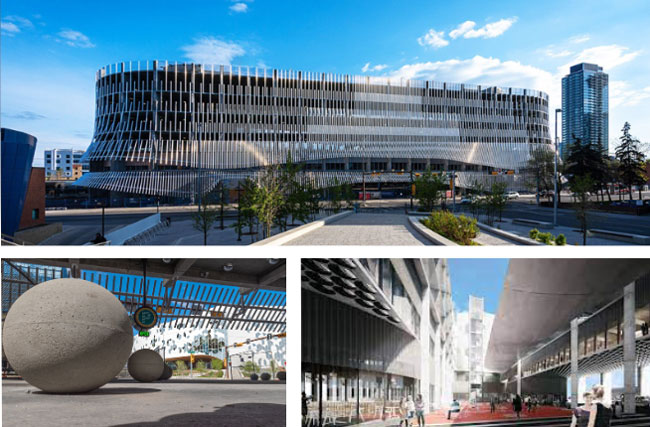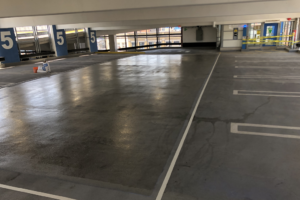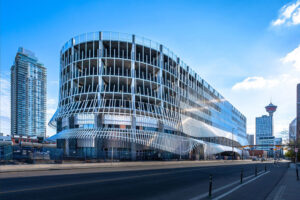By Giuseppina Alfarano
It is no secret that with time the world is changing right before us. Modes of transportation have evolved from once on foot, to horses and wagons, to engine-powered vehicles. Early vehicles started with basic automation and will soon progress to full automation driving.
Automated vehicles are no longer science fiction and have become the future and they can provide significant benefits in parking safety. Engineers will need to accommodate change through the new design and construction in relation to the Canadian parking industry.
Think of a time there was an amazing sale happening in the mall: this could have been Boxing Day or Black Friday. Imagine you are excited to get to the mall to save on these deals and you are faced with no parking spaces available. You’re circling around and around in the parking lot trying to find a parking space, but there is not one spot to be found. Once you find parking, you might have trouble parking, whether this is reversing, frontward parking or parallel parking. Then, before you can even get inside to see the great deals, you must find a parking machine to pay for parking. All these factors regarding parking are postponing you from getting to the sale.
Engineers can help make parking an easy, hassle-free experience allowing parkers to reach their destination quickly and efficiently. The implementation of autonomous vehicles allows this to become a reality. This lets users not to have to think twice on any aspect of parking.
Different kinds of engineers have separate roles in the design of autonomous vehicles to benefit the parking industry. Engineers assist in the creation of the automated parking system. This would require automation and robotics: implementing cameras, sensors, and robotics systems to locate…
5 best practices for maximizing the service life of your traffic deck coating
By Bryant Bortolotto-Freeman
If your building includes a parkade, chances are you’ve witnessed the wear and tear that comes from steady usage and exposure to moisture and contaminants like road salts. Even if the parking area is located indoors, the traffic deck coating (TDC) used to protect concrete surfaces will deteriorate over time, reducing its ability to effectively do its job.
“Traffic deck coating plays a key role in preserving concrete’s structural integrity, so it’s important to ensure it performs as intended,” said Bryant Bortolotto-Freeman, Engineer-in-Training at RJC Engineers. “By understanding the causes of concrete deterioration and following certain best practices to maximize your TDC, costly repairs to your concrete may be averted.”
What is Traffic Deck Coating?
A TDC is a multi-coat system formulated to protect concrete structures and structural elements from contact with moisture and contaminants. Typically, they are made up of a primer (polyurethane or epoxy-based), a basecoat, and a topcoat that work together to provide waterproofing protection, traction enhancements, wayfinding and light reflection in parkades and other concrete enclosures. Although usage of TDCs is widespread in North American, Bortolotto-Freeman has seen all-too often what happens when maintenance is ignored, or improper application creates weaknesses in the system. Common failures include debonding of the coating from the underlying substrate (or between the layers, cracks and scrapes letting in moisture, and surface damage from abrasion due to wheel racking and traffic exposure.
To prevent a failure and prolong the service life of your TDC, Bortolotto-Freeman recommends the following 5 Layers of Success:
Layer 1 – Surface Prep
Thorough surface preparation is crucial for a successful TDC installation, whether it’s brand- new concrete or an existing slab undergoing…
By Reachel Knight, Calgary Parking Authority
In late May, the Platform Innovation Centre & Parkade opened its gates to Calgarians with fanfare, community activities, and more… JUST KIDDING. With Calgary’s third COVID-19 lockdown underway, the Calgary Parking Authority’s (CPA’s) grand opening for its first purpose-built parkade in decades wasn’t quite what we’d envisioned when planning began years ago. Luckily for us, forward-thinking and adaptability are the foundation that Platform Parkade is built on.

Calgary’s East Village has always been a magnetic neighbourhood, a gathering place that draws visitors to its vibrancy, invention, and beauty (more on that later). Platform Parkade is part of the revitalized East Village urban mosaic. The need for the new parkade location was identified in The City of Calgary’s East Village Area Redevelopment Plan: the creation of Platform Parkade allowed key East Village projects, including the Studio Bell, home of the National Music Centre and Central Library, to be created without standalone parking space. Platform Parkade was designed, developed, and built to address the evolving parking and transportation needs of the neighbourhood.
Throughout the planning process and 2.5 years of complex construction, we worked to create a blueprint for the future conversion of this unique space. Certain design elements will allow the space to be adapted into commercial or residential uses in the future when the needs of the community change.
For example:
- Increased floor-to-ceiling heights to accommodate mechanical, electrical and HVAC requirements for future uses (office and/or residential)
- Slightly sloped floors with no ramp system mean that if/when this building is converted to an alternate use only a minor topper will have to be installed to level out the space. Given that there is no ramp system, no ramps will have…






